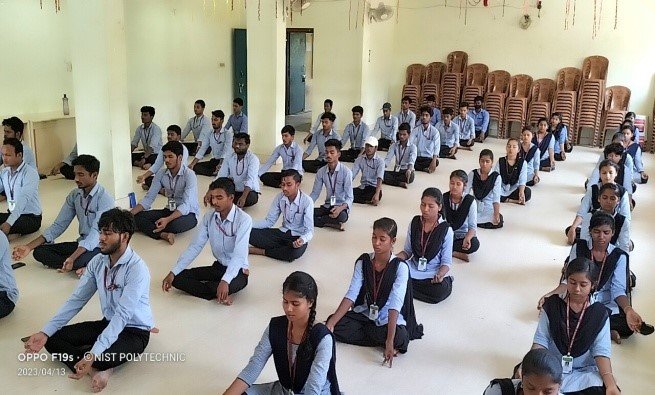YOGA AND MEDITATION
We usually never thought of meditation, yoga and studying all together in the same sentence, but it is worth noting that they all can be interrelated. Well, wonder no longer, meditation is absolutely fantastic for young people and there are a lot of benefits of meditation for young people and students that they can avail of. Through the practice of yoga, you can become more aware of your emotional, mental and physical health. Yoga techniques date back to at least the 5th century, and through a lot of research, it has been proved that its benefits for students and youngsters are outstanding. Yoga includes physical poses called asana, breathing techniques and meditation. It has been suggested that practicing yoga sessions two or three times per week for at least 20 minutes per session can lead to some considerable positive effects.
Meditation and yoga can contribute directly to improved mental focus and concentration among students. Both yoga and most forms of meditation include an increased focus on breathing techniques. Yoga and meditation involve long, deep, slow breaths, as well as the coordination of mental concentration with some kind of structured activity, such as yoga poses, breath patterns, chanting or even just focusing your gaze on a specific spot. Yoga combines strength and flexibility exercise with relaxation and meditation/mindfulness techniques. Studies have shown benefits of yoga in a wide range of mental and physical health problems, including a growing body of evidence showing positive effects in children and teens.
BENEFITS OF YOGA AND MEDITATION
Few benefits of yoga for students include:
- Improved concentration leading to better grades
- Balanced Blood Pressure
- Decreased Absenteeism & Tardiness
- Improved Interpersonal Relationships
- Enhanced Confidence Level
- Sound Sleep
- Relief from Headache and other Miscellaneous Problems
- Improved Calmness
- Sharper Brain
IMPORTANCE OF YOGA AND MEDITATION
For a completely healthy bodily function, both yoga and meditation are of great importance, practicing yoga can improve physical as well as mental health of an individual whereas meditation provides peace of mind and control over the body.Yoga and meditation can help us in many ways that include:
- Weight Management: There are lots of problems like obesity and uneasiness in breathing that are related to the weight and are very common among the students. Also, it has been observed that fat children are always on the target of bullies. The fast-paced life of a student can cause you to eat processed and high-calorie food and drinks. Practising yoga regularly can help with weight management. The thyroid gland plays a large role in body metabolism and there are several yoga poses, such as the fish pose, that specifically targets the thyroid gland. The deep breathing in yoga increases oxygen intake within your body cells, including fat cells, which can increase fat cell burn up. Fat metabolism is also increased, which causes increased calorie burn and increased energy.
- Flexibility: Yet another advantage of practicing yoga regularly is the flexibility of the body. Stretching your muscles through yoga poses releases the lactic acid that builds up within your muscles with time. This lactic acid at times can cause stiffness, pain, fatigue, and tension that can be really painful at times. For students who participate in sports, yoga can decrease the risk of injury through increased range of motion and less fatigue. Stretching increases joint lubrication and stretches the soft tissues of your body because when you practice yoga asana your ligaments, tendons, and the fascia sheath surrounding your muscles are also stretched thereby increasing the flexibility of your body.
- Strength: Strength and endurance are very important especially for young people who have to toggle between various activities all around the day. Yoga and meditation increase muscle strength and endurance if practiced regularly. Various yoga poses such as the plank, downward dog and upward dog increase upper body strength, holding standing poses for several long breaths increases strength within your quadriceps, hamstrings and abdominal muscles. Different breathing techniques improve your air intake, as a result, you tend to get less tired during heavy activities. Lower back muscles are strengthened by practicing poses like the chair pose and upward dog. Nearly all yoga poses help to build deep abdominal muscles and core strength. Increased strength allows for daily activities to be easier, and an increase in lean body mass increases your metabolism. Also with meditation, you tend to get a great deal of strength and calmness of mind.
- Decreased Stress: The main purpose of meditation is the peace of mind. Yoga also leads to a peaceful mind thereby decreasing stress levels. The life of a student can be stressful, dealing with school, tuition, games and other activities can be very tiresome and stressful which can lead to a lot of tension and stress thus yoga can help you relax. Yoga and its precise movements draw focus away from your busy and hectic day and can have calming effects on your body. In the same way meditation focus on inner peace leads to decreasing stress level among the preacher. After practicing yoga and meditation you will feel happier and have improved mental focus and concentration.
- Concentration and Sharpness: Meditation and yoga have proved to be of great importance in increasing concentration as well as increasing sharpness of the brain. Yoga helps in increasing concentration by few techniques like gazing. Both of the techniques can contribute directly towards improved mental focus and concentration. Both yoga and most forms of meditation include an increased focus on long, deep, slow breaths, as well as the coordination of mental concentration with some kind of structured activity, such as yoga poses, breath patterns, chanting or even just focusing your gaze on a specific spot. Meditation focus on peace of mind leads to a calm mind that further supports sharpness of brain and concentrating power.
HEALTH BENEFITS OF YOGA AND MEDITATION
Various health benefits include keeping human away from various health problems like:
- Cure Asthma: Studies conducted at yoga institutions in India as well as in other countries have reported impressive success in improving asthma. Asthma can be controlled to a great extent by using yoga techniques. It has also been proved that asthma attacks can usually be prevented by yoga methods without resorting to drugs. Physicians have found that the addition of improved concentration abilities and yogic meditation together with the practice of simple postures and pranayama makes treatment more effective. Yoga practice also results in a greater reduction in anxiety scores than drug therapy. Doctors believe that yoga practice helps patients by enabling them to gain access to their own internal experience and increased self-awareness.
- Control Blood Pressure: Meditation and yoga also control high blood pressure. The relaxation and exercise components of yoga have a major role to play in the treatment and prevention of high blood pressure (hypertension). A combination of biofeedback and yogic breathing and relaxation techniques has been found to lower blood pressure and reduce the need for high blood pressure medication in people suffering from it.
- Relief from Arthritis: Arthritis is a problem related to bones and joints which generally leads from ageing. Yoga's gentle exercises designed to provide relief to needed joints had been yoga's slow-motion movements and gentle pressures reach deep into troubled joints. Arthritis at times can be really painful, especially with the age, but yoga can help to deal with this problem. In addition, the easy stretches in conjunction with deep breathing exercises relieve the tension that binds up the muscles and further tightens the joints. Yoga is exercise and relaxation rolled into one - the perfect anti-arthritis formula.




